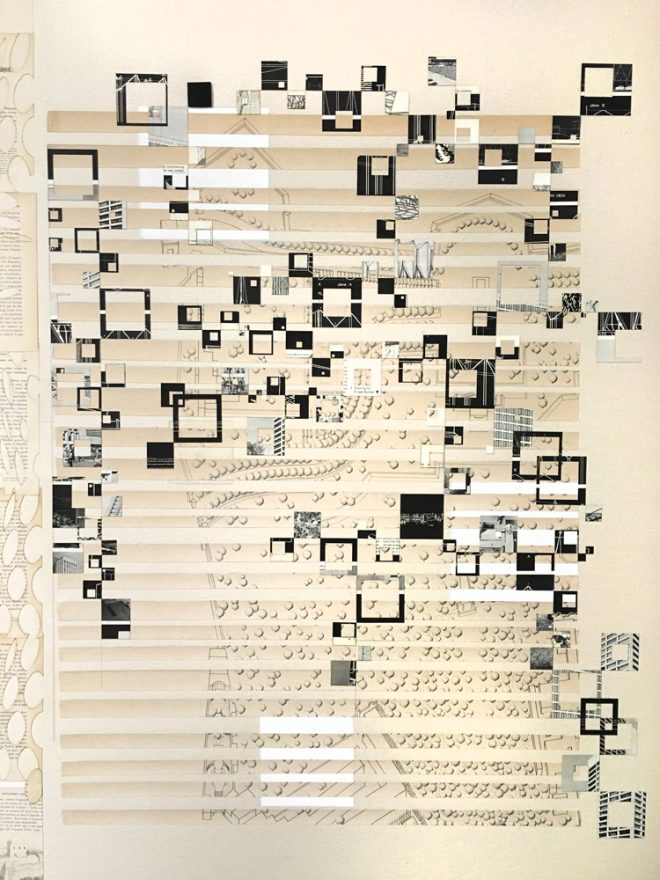Exhibition Pick: Jill Stoll
Jacob Kiernan visits Jill Stoll’s large-scale installation at AIA New Orleans, which shows the interconnectivity of architecture and collage.

Jill Stoll, Withdrawn, 2016. Paper collage on unprimed canvas (detail). Courtesy the artist.
Jill Stoll
AIA New Orleans
1000 St. Charles Avenue
October 1–November 12, 2016
The parallels between architecture and collage are many and manifest. Both draw from preexisting materials—hacked from their places of origin and configured anew. Whether using lead and lumber or photo and font, architecture and collage rely on taking what is at hand and putting it to imaginative use.
Jill Stoll draws upon this shared history with her most recent installation, Withdrawn, a 4-by-40-foot collage on view at AIA New Orleans. For this work, Stoll meticulously collected, cut out, and arranged hand-drawn architectural renderings, books on urban planning, and discarded slides of monuments (an antiquated reminder of university days past) to create a grand layout that enhances the entrance hall. The collage, covered in rectilinear cutouts and floral designs, resembles a cityscape or something masterminded by the infamous urban planner Robert Moses. But unlike Moses’ future-oriented plans, Stoll’s maplike collage harkens to days gone by.
Beside the ample serving of nostalgia, perhaps the most clever aspect of the installation is the set of square cardboard frames, ranging from one to four inches, placed modestly to the side of the collage. Interested prospectors can use the frame to scope out a section of Stoll’s work that they wish to purchase: the monolith pre-planned to be chopped up and distributed to the highest bidders, seemingly much like New Orleans itself. While the concept isn’t revolutionary (Jackson Pollock purportedly splashed paint onto vast canvases, then chopped them up to increase revenue), Stoll’s interpretation resonates in a post-Katrina landscape crowded with hungry developers chopping up the city on the cheap.
The name of the installation, Withdrawn, is a reference both to the feeling experienced by many denizens watching their city change and Stoll’s source material—books “withdrawn,” or removed from library circulation. The cut up tomes, diced slides, and minced architectural drawings remind one of the physical space lost (or gained) as libraries revise their collections and adapt to new digital technologies. Stoll’s work ultimately asks us whether it’s possible to embrace change artfully and responsibly because the city, its people, and its histories will remain.



